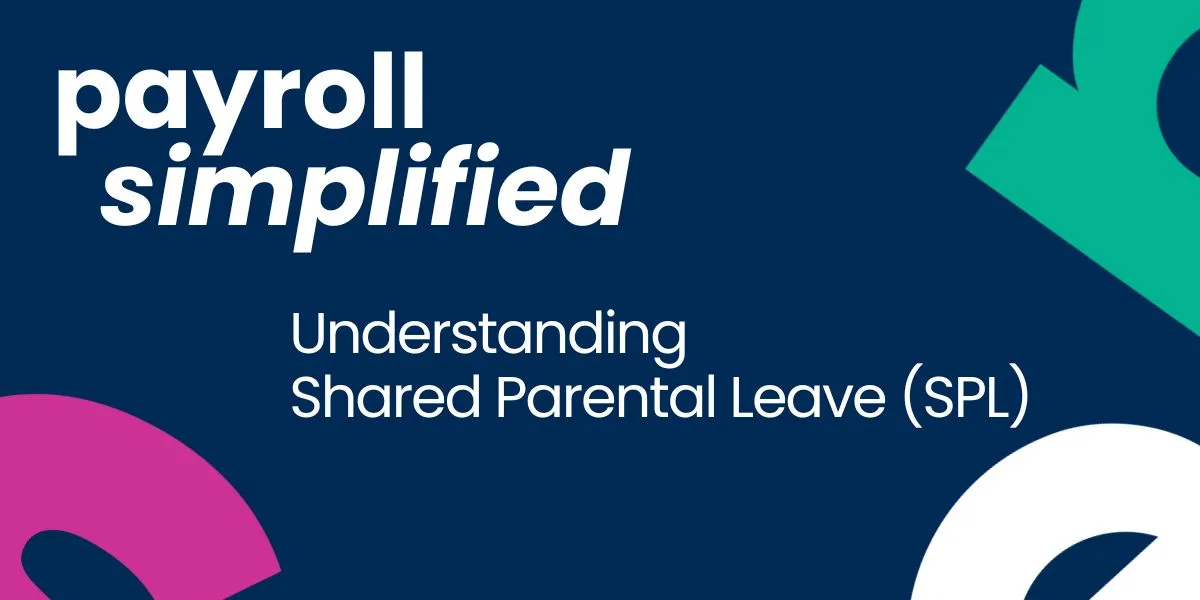Welcoming a new child into your family is one of life’s most significant moments. Shared Parental Leave (SPL) offers flexibility in how you and your partner can share time off work to care for your new arrival.
But how exactly does it work? This blog breaks down everything you need to know about this important policy.
What is Shared Parental Leave?
Introduced in 2015, Shared Parental Leave allows eligible parents to share up to 50 weeks of leave and 37 weeks of statutory pay between them following the birth or adoption of a child. It was designed to give families more choice and flexibility in how they balance work and family life during their child’s first year.
Who is eligible?
To qualify for Shared Parental Leave, you must:
- Be an employee (not self-employed or a “worker”)
- Have worked for the same employer for at least 26 weeks by the end of the 15th week before your baby is due (or when matched with an adopted child)
- Remain employed while you take SPL
- Your partner must meet the “employment and earnings test” (they must have worked for at least 26 weeks out of the 66 weeks before the baby is due and earned at least £390 in total across any 13 of those weeks)
- Both birth parents and adoptive parents can take SPL, as can the mother’s spouse, civil partner, or partner in a long-term relationship.
How does it work in practice?
The mother must first end her maternity leave early to create the shared parental leave entitlement. Here’s a typical process:
- Initial leave: The mother must take at least 2 weeks of maternity leave after birth (4 weeks if she works in a factory).
- Ending maternity leave: The mother submits a “curtailment notice” to her employer, stating when her maternity leave will end.
- Notice of entitlement: Both parents submit a notice to their respective employers declaring their eligibility and how they intend to split the leave.
- Booking notice: At least 8 weeks before each period of leave, parents submit a formal request to their employers.
Flexible options
One of SPL’s key advantages is flexibility. Parents can:
- Take leave at the same time or at different times
- Split leave into blocks, returning to work between periods of leave
- Change their minds about leave patterns (with proper notice)
- Request up to three separate blocks of leave (employers can allow more)
Statutory Shared Parental Pay (ShPP)
If eligible, you can receive Statutory Shared Parental Pay (ShPP) for up to 37 weeks. ShPP is paid at the rate of £187.18 per week (for 2025/26) or 90% of your average weekly earnings (whichever is lower).
Some employers offer enhanced shared parental pay above the statutory minimum, so it’s worth checking your employment contract or company policy.
Example scenario
Sarah and James welcomed their daughter in January 2025.
Sarah took the first 16 weeks off work, including 2 weeks of compulsory maternity leave.
James then took 12 weeks while Sarah returned to work.
For the final phase, they both took 10 weeks together, using the remaining balance of their shared entitlement.
This arrangement allowed them both to bond with their baby while managing their careers.
Benefits of SPL
- Shared bonding time: Both parents get meaningful time with their new child
- Career balance: Neither parent needs to take an extended break from work
- Financial flexibility: Families can optimise income by sharing leave
- Adaptability: Leave can be taken in blocks that suit your family’s needs
Common challenges
Despite its benefits, SPL uptake remains relatively low in the UK. Common obstacles include:
- Financial considerations: The statutory pay rate is often lower than what many families need
- Workplace culture: Some parents fear career penalties for taking extended leave
- Complexity: The application process can be confusing
- Awareness: Many parents don’t fully understand their entitlements
Recent updates and statistics
As of 2024, government statistics showed that only about 3-4% of eligible families were taking advantage of SPL. However, recent campaigns have sought to increase awareness, and some major employers have enhanced their SPL packages to encourage uptake.
How to apply for SPL
- Discuss with your partner how you want to share the leave
- Notify your employers at least 8 weeks before you want to start SPL
- Complete the required forms (available on the GOV.UK website)
- Plan financially for any reduction in income
- Keep communication open with your employer throughout the process
Employer responsibilities
Employers cannot refuse SPL if properly requested, though they can postpone continuous blocks of leave in certain circumstances. They must maintain your employment rights during SPL and allow you to return to the same job if your leave is 26 weeks or less.
Employment Rights Bill
Currently on its travels through Parliament, along with all other Statutory Leave and Pay. The Employment Rights Bill proposes that paternity and unpaid parental leave will be eligible from day one of employment. According to the roadmap published by the Government on 1 July 2025, this will come into play from
April 2026.
Alongside this, is a wider review of parental leave and pay covering;
- Maternity and paternity leave
- Shared parental leave
- Statutory pay entitlements
This is a wide-ranging review and is expected to take around 18 months.
Shared Parental Leave represents an important step toward more equitable parenting arrangements and work-life balance. While it may not be the perfect solution for every family, it offers valuable options that previous generations didn’t have.
Consider discussing SPL with your partner early in your pregnancy or adoption journey. With proper planning, it can provide a meaningful framework for sharing the precious early months of your child’s life.
Still need help? Reach out to a member of the Ascend Payroll team for expert guidance

